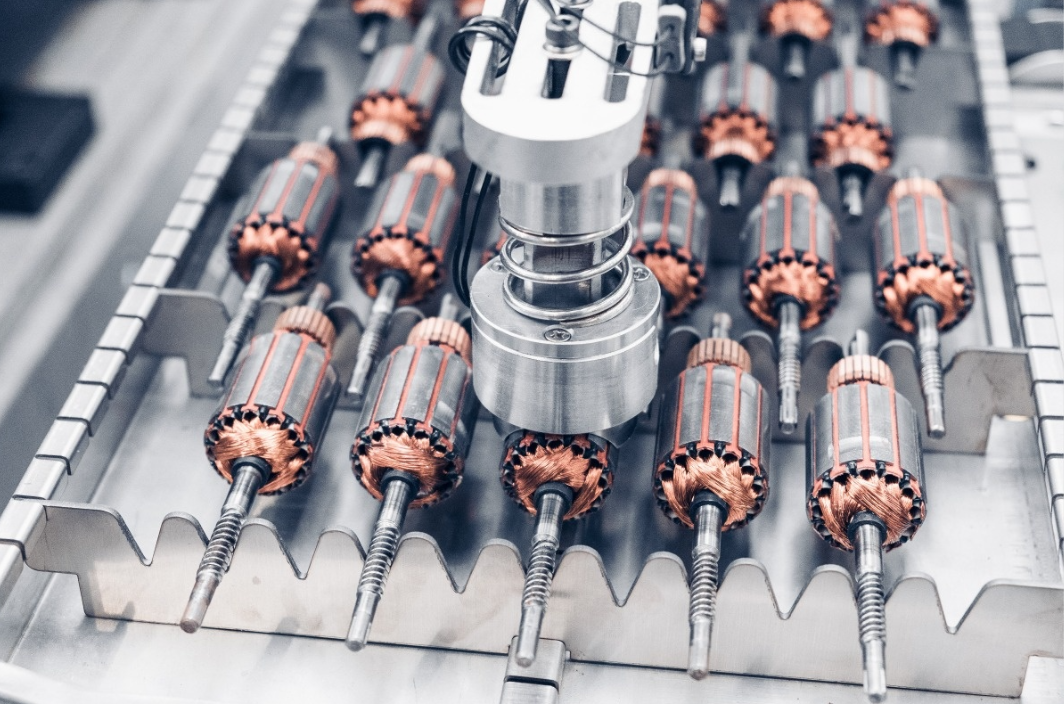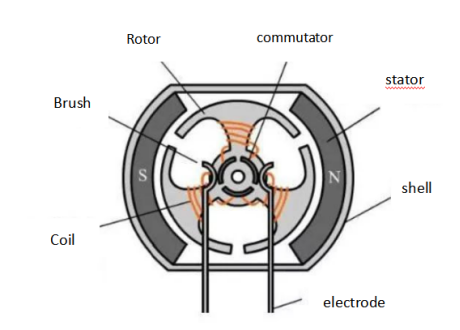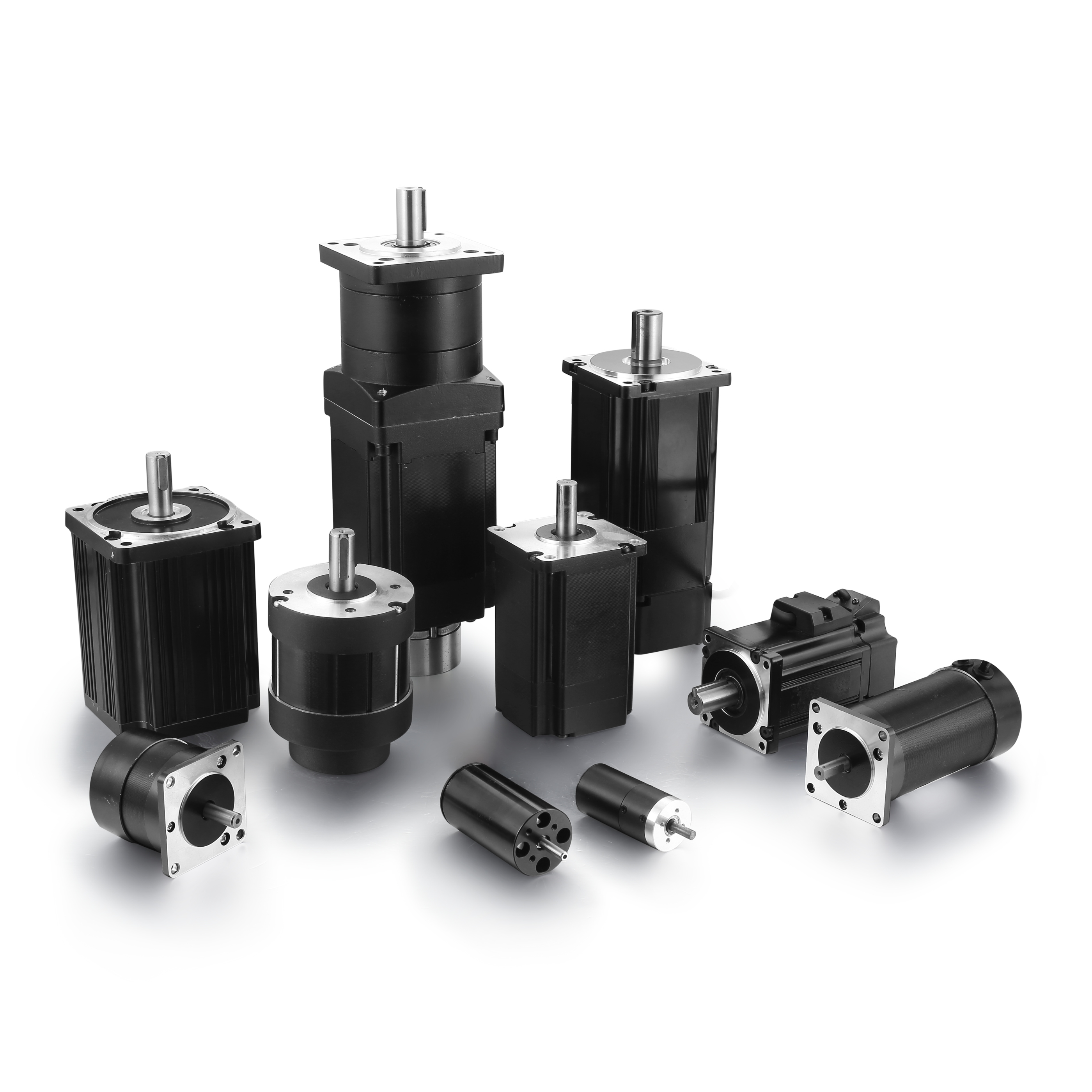BG Motor - The Difference Between DC Brushless Motor And DC Brushed Motor
Introduction Many product control applications use DC motors, and compared with AC motors, DC motors are easier to implement a control system (used when controlling speed, torque or position.)
There are two commonly used DC motors: brushed motors and brushless motors (or BLDC motors).
Brushed DC motors have brushes that are used to commutate the motor to make it rotate.
The brushless motor replaces the mechanical commutation function with electronic control.
In many applications, brushed or brushless DC motors can be used. Their functions are based on the same principle of attractive and repulsive forces between coils and permanent magnets. Both have advantages and disadvantages, which may lead you to choose one of them based on the requirements of the application.
DC brush motor:

A ring-shaped permanent magnet is fixed in the DC motor, and the current passes through the coil on the rotor to generate ampere force. When the coil on the rotor is parallel to the magnetic field, the direction of the magnetic field will change when the coil on the rotor continues to rotate. Therefore, the brush heel at the end of the rotor changes. The plates are alternately contacted, so that the direction of the current on the coil also changes, and the direction of the Lorentz force generated does not change, so the motor can keep rotating in one direction.
The working principle of the DC generator is to convert the alternating electromotive force induced in the armature coil into a DC electromotive force when it is drawn from the brush end by the commutator and the commutation action of the brush.
The direction of the induced electromotive force is determined according to the right-hand rule (the magnetic line of induction points to the palm of the hand, the thumb points to the direction of movement of the conductor, and the other four fingers point to the direction of the induced electromotive force in the conductor). The direction of the conductor's force is determined by the left-hand rule.
This pair of electromagnetic forces forms a moment that acts on the armature. This moment is called electromagnetic torque in a rotating motor. The direction of the torque is counterclockwise, in an attempt to make the armature rotate counterclockwise.
If the electromagnetic torque can overcome the resistance torque on the armature (such as resistance torque caused by friction and other load torque), the armature can rotate in a counterclockwise direction.
The main structure of a brushed motor is stator + rotor + brushes, which obtain rotational torque through the rotating magnetic field, thereby outputting kinetic energy. The brush and the commutator are in constant contact and friction, and play a role of conduction and commutation during rotation.

The brush motor adopts mechanical commutation, the magnetic pole does not move, and the coil rotates. When the motor is working, the coil and commutator rotate, but the magnetic steel and carbon brushes do not rotate. The alternating current direction of the coil is changed by the commutator and brushes that rotate with the motor.
As the motor rotates, different coils or different two poles of the same coil are energized at different times, so that the NS pole of the coil generating magnetic field and the NS pole of the closest permanent magnet stator have a suitable angle difference. Repel each other, generate power, and push the motor to rotate. The carbon electrode slides on the coil terminal, like a brush on the surface of an object, so it is called a carbon "brush".
Sliding each other will rub the carbon brushes and cause wear and tear. The carbon brushes need to be replaced regularly; the on and off alternately between the carbon brushes and the coil terminals will cause electric sparks, electromagnetic breakage, and interference with electronic equipment.
Brushless DC motor:

The brushless motor adopts electronic commutation, the coil does not move, and the magnetic pole rotates. The brushless motor uses a set of electronic equipment to sense the position of the magnetic poles of the permanent magnet through the Hall element. According to this perception, the electronic circuit is used to switch the direction of the current in the coil at the right time to ensure that the magnetic force in the correct direction is generated to drive the motor. . Eliminate the shortcomings of brushed motors.
These circuits are motor controllers. The controller of the brushless motor can also realize some functions that cannot be realized by the brushed motor, such as adjusting the power switching angle, braking the motor, making the motor reverse, locking the motor, and using the brake signal to stop the power supply to the motor.The electronic alarm lock of the battery car now makes full use of these functions.
The difference between brushed DC motor and brushless DC motor
1. Scope of application
Brushless motor: usually used in equipment with relatively high control requirements and high speed, such as aircraft models, precision instruments, etc., which have strict control of motor speed and high speed.
Carbon brush motor: usually power equipment uses brush motors, such as hair dryers, factory motors, household range hoods, etc. In addition, the speed of the series motor can reach very high, but due to the wear of the carbon brushes, use The service life is not as good as the brushless motor.
2. Service life
Brushless motors: Usually the service life is in the order of tens of thousands of hours, but the service life of brushless motors is also very different due to different bearings.
Carbon brush motor: Generally, the continuous working life of a brush motor is several hundred to more than 1,000 hours. The carbon brush needs to be replaced when the use limit is reached, otherwise it is easy to cause the wear of the bearing.
3. Use effect
Brushless motor: usually digital frequency conversion control, strong controllability, from a few revolutions per minute to tens of thousands of revolutions per minute can be easily achieved.
Brushed motor: Brushed motors generally work at a constant speed after starting, and it is not easy to adjust the speed.
4. Energy saving
Relatively speaking, the brushless motor controlled by inverter technology will save much energy than the series motor. The most typical ones are inverter air conditioners and refrigerators.
5. Future maintenance
Brushed motors need to replace the carbon brushes. If they are not replaced in time, the motor will be damaged. Brushless motors have a long service life, usually more than 10 times that of brushed motors. However, they need to be replaced if they are broken, but the daily maintenance is basic. No need.
 BACK
BACK

